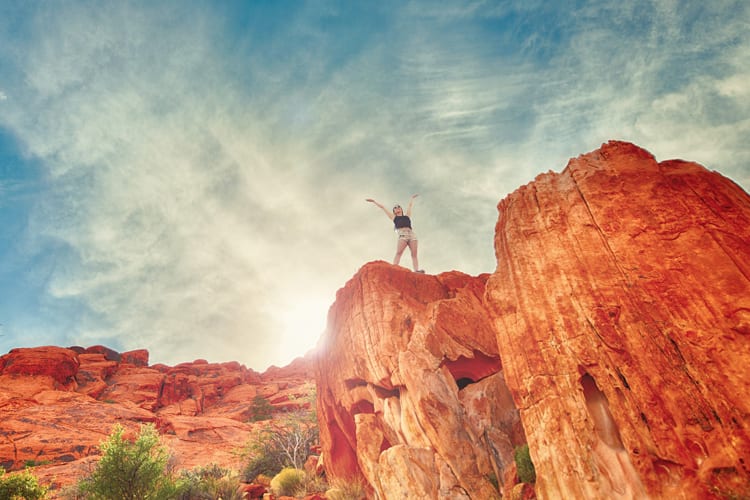With cooler temperatures rushing into the Valley, Arizonans are looking for ways to take advantage of the nice weather. One of those ways is hiking in the state’s beautiful mountains.
But if you are new to hiking and cannot find someone to hike with you, a day on the trails could turn into a mountain rescue. So, before you hit the trails, make sure you have the essentials.
Before the hike
Research the trail you wish to take and its hours of operations. Arizona is full of beautiful, scenic trails of all levels of difficulties and lengths. Do you want to spend a day in the desert or a take short, two-hour hike?
If you’re hiking alone, the Scottsdale Fire Department recommends choosing an easy or populated hiking trail in case of emergency. Additionally, it suggests filling in a friend or family member on your plans.
“Before you leave your house,” Scottsdale Fire Department Battalion Chief Dwayne Bader said, “tell them what trail you plan on going to, what time you plan to get off the trail, because if you go to the very end of the trail, that can be an all-day hike.”
Bader also suggests hydrating the day before hiking. Hydrating a few hours before the hike is always a good idea, but drinking water the day before gives the body time to absorb the nutrients, he said.
Lastly, check the weather before you head out. If there is a storm in the forecast, it is best not to go.
Packing? Better bring a comb
When you’re packing, make sure you bring the essentials: Your fully-charged cell phone and GPS, some snacks, and a comb to brush off the jumping cholla.
“Hiking in the desert, we recommend people bring a comb actually,” said Kelly Hayes, the assistant natural resource coordinator at Pinnacle Peak Park. “Because with the cholla balls, they’ll break off in order to propagate and then people will get that stuck in them, especially if they’re going off trail, which we don’t recommend. If you take a comb, you can get at the base of that and get it out a lot easier.”
She suggests bringing a first-aid kit and a map of the park since a phone or GPS’s battery life is unpredictable.
Water is another critical item on the list. In addition to hydrating the day before and right after the hike, the fire department suggests bringing water on the trail –and a lot of it.
“We also recommend 12 ounces of water per hour,” Bader said. “That’s kind of just a gage for people to figure out, ‘How much water do I need for this trail?’”
He also said to bring any medication that you take on a daily basis with you.
Safety on the trail
Once on the trail, Bader suggests knowing how far you plan on going before heading out. He said that most of the time, vacationers looking to make the most of their visit can find themselves too tired to make it off the trail.
“They walk the trail, and they lose track of time, or they have all the energy in the world because they’re enjoying their hike, but they forget that if you hike in two miles, three miles, you have to hike out,” he said.
The chief said that he has had to rescue approximately 40 hikers since January and that most rescues are a result of dehydration and exhaustion, which often leads to injury.
An emergency like this is why Bader suggests choosing a popular hiking trail if you head out alone. If something were to happen, a passerby could help. Luckily, the Phoenix and Scottsdale areas have no shortage of popular trails: Pinnacle Peak, for example, saw around 235,000 hikers in 2017.
“If you’re doing a long hike on a trail that doesn’t have a lot of people on it, you’re really better off not hiking solo,” said Laurel Lewis, senior vice president of NAI Horizon and an avid hiker. “Solo hikers tend to get into more trouble. But if you’re hiking more local, heavy traveled trails like Camelback, or Squaw Peak, or even in the McDowells, you don’t worry so much about that.”
Additionally, Hayes and Bader said that most trails in the Maricopa County have emergency markers that will allow for firefighters to find a stranded hiker in need of help, so knowing where the markers are and keeping in mind which one you’re closest to will help firefighters reach you faster in case you experience an emergency.
Lewis, who hikes Camelback Mountain five times per week, also suggests staying aware of your surroundings and animals that may live on the path, and to leave the wild animals alone.
Above all, let caution be your guide when you’re out on the trails.
“I don’t do anything beyond my ability,” Lewis said. “If I feel like I’m frightened of the exposure [of the trail], I don’t do it.”




